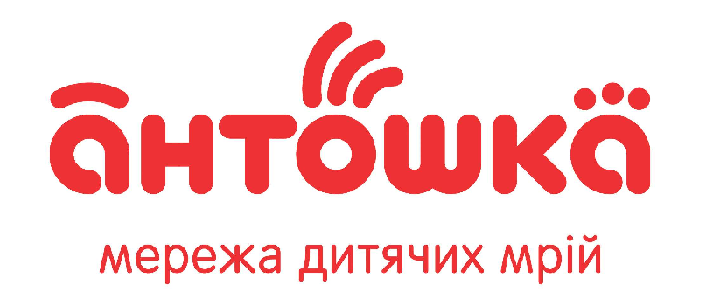
Collaborator 1.28.0 — Updating of Programs, Tracking of Emails, and Speeding up of Performance
We continue teaching Collaborator with new functions and improving the old ones. New Collaborator 1.28.0 helps to track history of all sent emails, adding Meetups to Programs and, if necessary, update Tasks with such Programs for those who have already passed them. In addition, many other improvements made work of the platform faster and more convenient.
In this release:
- Tracking of email dispatch
- Updating of Learning Programs in Tasks
- Group assigning for roles
- Speeding up of Performance in Tests, Webinars, and Meetups
- Autosearching of Resources by name
- Description of Program elements
- Adding Meetups into Programs
- New option for birthday greetings
- Active Directory synchronization
1. Tracking of email dispatch
Email dispatch is the simplest, most reliable and economical way to communicate with users. Each user automatically receives emails from Collaborator portal about new tasks, results, failed courses or tests, notifications, news, responses to requests, etc. However, when sending email messages, there is no guarantee that they will be viewed. It was impossible to track emails in previous versions of Collaborator.
In Collaborator 1.28.0 you will be able to track:
- whether the user opened the email;
- the exact time when email was opened and time elapsed since receiving of it;
- from which IP-address the email was opened;
- whether the user followed a link in the email.
All information about emails is collected in the Sent emails log. Each sent email has one of the following statuses:
- Sent — email was sent to user, but hasn’t been opened yet;
- Opened — user has opened email and reviewed it;
- Clickthrough — user has opened and reviewed email as well as followed links in email;
- Error — email was not sent to user due to error (email address is invalid, refused by server, etc.). It is necessary to resend email.
In addition, messages in Sent emails log are sorted according to the type of template they were created by. (For more details about creating message templates, open wiki encyclopedia)
The new filter called “Type” shows the purpose of the sent messages:
- Reminder
- News
- Notice
- Task
- Account
If you want to view the sent message and detailed statistics on its delivery – click the “Review” button.
Administrators can enter Sent emails log not only through Reports, but also using link in Notices, Tasks and News.
Administrator can find the necessary task, for example, “Spring 2017 Testing”, and clicking on the button ![]() go to Sent emails log. All messages associated with this task will already be filtered there. Notices and News are treated the same.
go to Sent emails log. All messages associated with this task will already be filtered there. Notices and News are treated the same.
Tracking of email allows solving a range of problematic issues in educational process:
- If Sent emails log shows that the user has been registered on the portal for a long time, but has not yet opened or viewed any email – it may be indicative of some problems with email.
- In case if an employee ignores letters, referring to the fact that “The message did not come” or “Email cannot be opened”, you can check the status of each email sent to him and clarify the situation.
- You can analyze how each of the employees reacts to notifications: speed of opening, rate of link following, etc. It helps in understanding whether an employee is interested in education or no.
2. Updating of Learning Programs in Tasks
One of Collaborator principles is an automatic updating of learning task contents after making changes to it. However, when the Learning Program is a content (may contain many structural elements – courses, tests, surveys, etc.), the automatic changes in the structure of the Tasks created with the Learning Program will effect learning results. These changes will influence all – those who are learning now and those who has already finished the course.
Starting with the Collaborator 1.28 version, it is possible to amend elements of Tasks with Learning Program: replace elements, change their order, delete or add new ones – these changes will not be displayed automatically. You need to “synchronize” contents of the program, in order users can see these changes.
Why is it needed?
After such “synchronization” the result of the Task will be recalculated and Program passing report in this Task will be changed accordingly.
Selective “synchronization” is needed, so that the passing results of users who had been assigned to the Task earlier (for example, a year ago) were not distorted. If a new element is added to the program, the mark of the user (who has passed the program before these changes) can be changed.
When changing the contents of the program, the system will determine and show which tasks can be updated – all you need is to click “Update structure” button.
If there is no need in synchronization of changes to the Program in Task (Tasks have been finished and no longer assigned to users), you skip this update.
3. Group assigning for roles
In previous versions of Collaborator, to assign ten users for the role (for example, moderators), it was necessary to assign each one individually (edit the profiles of each users). This process is simplified in new version of Collaborator. Now you can assign one role to multiple users at once.
When selecting more than one user, the “Assign/remove role” function appears in “Actions”.

4. Speeding up of Performance in Tests, Webinars, and Meetups
In Collaborator 1.28.0, the Test subsystem is completely recompiled – code size is reduced by half and page became “lighter”. In addition, we greatly accelerated performance of Webinars and Meetups.
In other words, Tests began working more reliably and faster 🙂
5. Autosearching of Resources by name
When a new Task is created, you need to connect content to it (resources, tests, polls, etc.). In previous versions, this content had to be selected from the list, and when there were many resources – the list was very long.
Now it’s easier to find the right resource. You just need to start typing its name, or any word from the description, and auto-search will filter out all matching resources. Search by name makes it much easier to work with resources.
6. Description of Program elements
Learning Program can consist of many elements, access to which is opened gradually under certain conditions. Now, when opening a list of Program elements you can immediately see the description of each element under the title. This gives an instant view about the Program and, if necessary, allows you to find the desired course, resource or test quickly.

7. Adding Meetups to Programs
Meetups can be part of the program now. Nevertheless, when adding a Meetup to a ready-made Program, you need to be extremely careful! The Task with such a program must necessarily be tied to the calendar and have specific deadlines.
If that Task has a relative period, it is unclear what day of the week this event will occur, therefore, the meaning of a Meetup perishes. The same story with Programs, which have no time limits.
When you add Meetup to a Program with unspecified date, the system will display warning.

8. New option for birthday greetings
Previously, the birthday congratulations to a user could be seen on the main page of the platform only by a limited set of people – director, department colleagues and subordinates. Now, birthday congratulations for each employee are visible to all users.

9. Active Directory synchronization
Our platform supports synchronization with Active Directory (AD). New employees automatically appear in the system, while dismissed ones are being automatically blocked, based on the data stored in AD.
At the same time, we support various scenarios for this function. In each separate case, the AD synchronization settings remain individual.
Several proven operating scenarios:
- Only users with an account in AD can enter the Learning System. Users sign in using login and password.
- Users sign in to the System from their Windows-based working computers, without login and password. AD automatically determines which of users are “insiders” and “outsiders” according to the current Windows account.
- The system can be entered both by users with login and password (stored in AD), and external users whose accounts are created manually in Collaborator or obtained from 1C personnel system.
While working over making Collaborator even easier and more convenient, we carefully listen to each client. The new release of Collaborator 1.28.0 confirms this. Now you can track the history of all sent emails: it is possible to see who and when opened the message and followed the link. In addition, new version will be able to please you with many other joyful improvements.
Do you have any ideas, which can make Collaborator even better? Then write to our Facebook page: https://www.facebook.com/lmscollaborator/. And, perhaps, your idea will be realized in the next release.
Best regards,
Collaborator team.



































